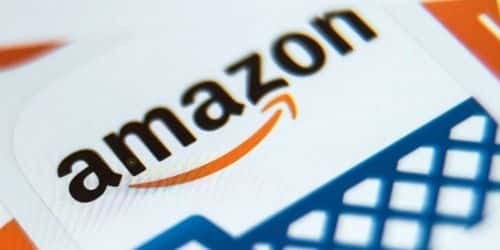Amazon is one of the most popular internet marketplaces. However, like other major competitors, Amazon does not stock all of the products offered for purchase. Users can instead sell their own things online. So, if Amazon is a massive online marketplace where individuals buy and sell items to one another, how does the company make any money?
Amazon generates money by stocking and selling its own products and allowing third-party sellers to sell on the website. For setting up and selling on the website, sellers are charged a nominal fee (a flat rate of $1 per item plus a varied percentage depending on the sale category).
Do you need additional information? We’ll go over this procedure in greater detail below!
Quick Facts About Amazon
Here are some basic facts about Amazon that will help you comprehend its size and the main Amazon business model.
- Headquarters: Seattle, Washington, USA
- Established in 1994
- Founder: Jeff Bezos.
- Key Subsidiaries: Audible, Goodreads, IMDB, PillPack, Ring, Souq, Twitch, and Whole Foods Featured Products: 12+ Million market products.
- Merchant Listings: 119 million products
- Annual Shipments: 6 billion
- Share of eCommerce in the United States: 50%
- Amazon Prime subscribers: 150 million
- Average Prime member spend: $1.4k each year.
- Most Popular Shopping App: 150.6 million smartphone users
- Trust: Amazon is trusted by 89% of customers.
- Most Popular Category: Electronics
- No of employees in 2019: 798,000
- No of Sellers: 2.5 million people.
What Products Does Amazon Offer?
Although Amazon sells much more through its subsidiaries, the basic Amazon business model is based on an eCommerce market platform. Amazon sells things through its platform and permits third-party vendors to sell to customers.
The platform now provides the following products/services:
- Amazon Video
- Amazon Music App for Android Echo and Alexa
- Amazon Fire Tablets
- Amazon Fire TV
- Books and Kindle E-readers
- Products sold by merchants
- Products from the vendor
Who Are Amazon’s Customers?
Amazon distinguishes three types of customers: customers, seller customers, and developer customers.
Customers are people who buy their products or use their services. Sellers offer their items on the platforms, while developers focus on leveraging AWS technology for infrastructure, digital products, or services.
How Does Amazon Make Money
#1. Amazon Store and Retail Sales
Amazon’s retail revenues exceeded $469 billion USD in 2021. This accounts for a sizable portion of Amazon’s revenue. Retail sales fees vary.
#2. Amazon Prime Memberships
Amazon Prime is Amazon’s subscription program. Fees can be paid on a monthly or annual basis. It costs $12.99 USD per month or $119 annually. Prime members save money on shipping charges, have access to Amazon Prime Music, Prime Reading, and Prime Video, and are eligible for special deals. In 2021, Amazon Prime sales produced more than $30 billion in income.
#3. Alexa Smart Home Systems
The Alexa smart home system is sold and hosted by Amazon. Alexa smart speakers range in price from $40 to $200. There are no monthly fees associated with utilizing Amazon Alexa-enabled devices. Alexa is predicted to have a gross profit margin of 90% for Amazon.
#4. Amazon KDP Publishing
Amazon is one of the most popular places for authors to self-publish and print on demand using KDP. It makes 30% or more on each book printed or sold, with authors receiving royalties ranging from 35% to 70%. It sells books in paperback, hardback, and digital formats.
#5. Amazon Kindle
Amazon is a market leader in digital book systems with its Kindle offerings. While it has been widely claimed that Amazon sells the Kindle at a loss, the company makes its money through advertising and media sales. The media sales represent the price of each book sold on the platform. Readers can purchase a Kindle Unlimited subscription for $9.99 per month or pay for each book sold, with Amazon keeping $0.15 per megabyte (file size) of the book. On books priced more than $2.99, delivery prices vary by country.
#6. Amazon Prime Video
Amazon Prime Video is another membership service available for $9 per month from Amazon. Subscribers can use this to watch movies and television series. The collection is expanding, but it is estimated to feature approximately 24,000 movies and 2,100 television series, some of which are original material.
#7. Amazon Music
Amazon Music is available for $7.99 per month or $79 per year. In addition to the membership money, Amazon profits from independent music publications. Amazon pays musicians a fraction of a penny ($0.00402) for each stream, at the midpoint of what Spotify and YouTube pay per stream.
How Does Amazon Report Diversity and Inclusiveness?
As part of our effort to raise awareness about the importance of diversity in the workplace, we provide investors with a view into Amazon’s transparency and dedication to diversity, inclusiveness, and social responsibility. We examined the data that Amazon makes available to show how it reports the diversity of its board and workforce to make readers in making informed purchasing and investing decisions.
Is Amazon a Free Service?
Buyers can use Amazon for free because anyone can sign up. Buyers must pay the advertised rate plus shipping and handling fees for each product they purchase. Sellers must pay a monthly subscription fee and a $1 fee for each good sold. In some cases, Amazon offers free shipping on qualified purchases.
Value Propositions in the Amazon Business Model
Amazon Business Channel
Amazon spends a lot of money on advertising. It spent $6.3 billion, $8.2 billion, and $11.0 billion on advertising and other promotional costs to advertise products and services in 2017, 2018, and 2019.
Amazon states in its SEC filings that the goals of its communications strategy are (unsurprisingly) to:
- Increase customer visitation to our websites
- Increase the visibility of our products and services.
- Encourage repeat purchasing
- Create new product and service income opportunities.
- Strengthen and expand the Amazon.com brand.
Amazon Collaboration Strategy
As it has grown, Amazon has created alliances and selectively purchased businesses that fit its core business model or a future strategic goal.
Amazon’s partnership strategy can be divided into three categories: “test before you buy” (invest then buy), “pure partnership,” and “ecosystem approach.”
Amazon’s Business Model: Invest First, Then Purchase
Amazon has made significant investments in its future strategy through strategic acquisitions. It has frequently progressed from early investment to complete acquisition and integration with Amazon. The acquisitions provide a glimpse into Amazon’s future as it expands its capabilities and enters new industries.
Drugstore.com (pharmacy), Living.com (furniture), Wineshopper.com (wines), HomeGrocer.com (groceries), Sothebys.com (auctions), Kozmo.com (urban home delivery), and, most recently, Wholefoods.com are some examples.
Sellers’ Ecosystem
Amazon is one of the world’s largest online marketplaces, with an estimated 8 million third-party sellers. Amazon marketplace merchants sold $200 billion in merchandise in 2019.
Affiliate Programs and Networks
Another essential component of Amazon’s economic model is its network of publishers. Frequently, blogs earn a commission for any referrals that result in a sale. This is the foundation of affiliate marketing and contributes to the larger Amazon ecosystem by driving traffic to its website.
Amazon’s Supply Chain
Given such a startling number of categories, let alone individual things, the question of where all these products originate arises. Inventory expenses, particularly for low-frequency commodities, are a factor in addition to storage and logistics. The following are the most popular sourcing models:
Amazon employs three ways for book fulfillment and a few other categories. The three approaches described below are typical of Amazon’s (albeit they are more complex than illustrated):
- Standard inventory: only the most popular items are kept in their own fulfillment centers.
- Just-in-time inventory: arrangements with producers (rather than wholesalers) to ship goods to Amazon or (depending on various conditions) directly to the customer when an order is received.
- Third-party sellers: this is another example of inventory that is not owned by Amazon but is sold on Amazon Marketplace. These could be other professional vendors or users looking to sell gently used things. Unless they employ Fulfilment by Amazon and/or Shipping with Amazon services, the goods are usually housed and shipped by a third party.
Acquisitions by Amazon
Amazon has historically been a cautious buyer. Despite the historic Whole Foods acquisition ($13.7 billion), as well as a few smaller acquisitions such as Zappos ($1.2 billion in 2009) and smart doorbell firm Ring ($1.2 billion in 2018).
In general, Amazon has generally been significantly less focused on acquisitions than its tech-behemoth competitors. That appears to have changed. Aside from the fundamental Amazon business model, which began and continues to exist within the marketplace, there are now multiple business models.
What the Acquisitions Mean for Amazon’s Goals
Over the course of nearly two decades, the company has acquired or invested in at least 128 businesses from Paris to Dubai. Some of the largest are depicted in the infographic below.
Who Amazon Considers Competitors
Amazon describes its product and service competitive environment as intense. It sees the following as its primary competitors:
- Retailers, publishers, vendors, distributors, manufacturers, and producers of the products we offer and sell to consumers and companies via physical, e-commerce, and omnichannel channels.
- Publishers, producers, and distributors use various physical, digital, and interactive media and distribution methods.
- Companies that offer e-commerce services include website creation and hosting, omnichannel sales, inventory management, supply chain management, advertising, fulfillment, customer service, and payment processing.
- Companies that offer fulfillment and logistical services to themselves or third parties, either online or offline.
- Web search engines, comparative shopping websites, social networks, web portals, and other online and app-based methods of discovering, using, or purchasing goods and services directly or in partnership with other shops.
- Companies that offer information technology services or products, such as on-premises or cloud-based infrastructure, as well as other services.
- Consumer electronics, telecommunications, and electronic device companies that design, manufacture, market, or sell their products.
- Companies that offer groceries both online and in shops.
Based on this, we may identify the major themes:
- Amazon is focusing on grocery and household items.
- Amazon concentrates on increasing AWS and its offerings, such as AI.
- To complement Amazon Echo, Amazon will expand its line of consumer goods for the home and smart devices.
- Amazon will keep investing in entertainment and media, such as Amazon Music and Prime Video.
Entry into New Markets
#1. Healthcare
Prescription medicine cost in the United States alone exceeds $500 billion. The business model is archaic and ripe for disruption. Who needs 9,000 Walgreens locations when Alexa can renew your medicines and deliver them the next day?
Amazon’s alleged interest in pharmacy and drug distribution caught the healthcare industry’s attention in 2017. In that year’s third and fourth quarters, healthcare executives were required to discuss the Amazon issue so frequently that “Amazon” outnumbered “emergency room.” “Amazon might be both a rival and a collaborator in some areas,”
For example, Amazon is entering the $3 trillion healthcare business. Amazon has partnered with Warren Buffett’s Berkshire Hathaway and JPMorgan Chase JPM to enter the healthcare market. Before the agreement, the corporation paid roughly $1 billion for the online pharmacy PillPack.
Its investment in cancer detection company GRAIL was a vote of confidence in genomics, which will be a significant computing area due to its massive data and processing requirements.
#2. Expansion Into Different Countries
With the acquisition of Souq.com, a Middle Eastern e-commerce site, Amazon expanded geographically. Expect future acquisitions to strengthen its position in developing markets.
#3. AWS Expansion Continues
Seattle-based Amazon is increasing its AI investments in AWS and the Alexa ecosystem. It aspires to be the primary provider of AI-as-a-service. However, it is not abandoning retail, operating supermarkets, books, and convenience stores across the United States.
#4. Everywhere AI
Amazon is investing heavily in artificial intelligence money and talent. The Amazon business strategy has already resulted in acquisitions of a diverse spectrum of AI companies:
- Harvest.ai – 2017
- Embodied in 2016
- Trackr 2016, Definedcrowd 2016, Kitt.ai 2016
- Mara.ai – 2015
- 2015 – Safaba 2015 – Orbeus
- 2Lemetry – 2015
- Ivona Software was founded in 2013.
- Evi Technologies was founded in 2013.
AI will underpin the Amazon business model of the future, from backend supply logistics to optimizing product suggestions and the overall user experience.
#5. More Groceries and household supplies are sold in retail stores.
Notably, Amazon’s $13.7 billion acquisition of food chain Whole Foods last year shocked the grocery industry, indicating Amazon’s increasingly aggressive drive into brick-and-mortar retail.
Amazon launched a service named AmazonFresh to store and transport food, including veggies and refrigerated and frozen items, to compete with established big-box shops like Walmart and Target and Uber-like logistics newbies like Instacart. To compete with ready-to-cook choices from firms like Blue Apron and Plated, the company now sells its own meal kits through Fresh.
Future Amazon Business Model
The previously mentioned tendencies will be interesting to follow as the pace of development and technology rapidly evolves. As a result, Amazon will have tremendous potential to enter new sectors with innovative business models and challenge established competitors.
Conclusion
While Amazon is most recognized for its retail operations, it has successfully expanded into publishing and production. Amazon makes money from these subscriptions as well as profits from content creation.
- AMAZON AFFILIATE REQUIREMENTS: Best Practices & All You Need
- How To Become An Amazon Affiliate: Step-by-Step Guide
- 25 BEST AMAZON BLACK FRIDAY DEALS IN 2022.
- AMAZON PRIME LOGO: History, Fronts, and All You Need to Know
- HOW TO START AN AMAZON BUSINESS IN 2023: Step-By-Step Guide







1 comment
wow !! what a unique case study